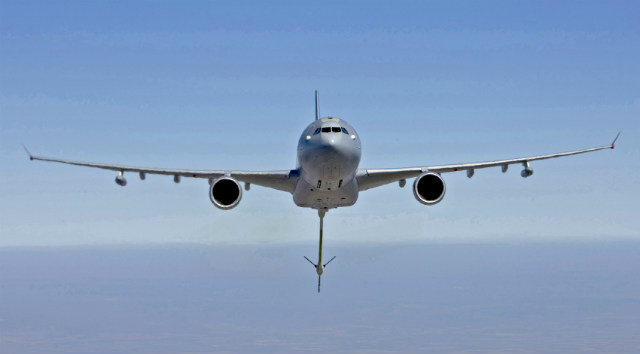Airbus Defence & Space this week added South Korea to its growing list of A330 Multi-Role Tanker Transport (MRTT) operators after the nation downselected the tanker type over Boeing’s KC-46A Pegasus and Israel Aerospace Industries’ 767-based design.
South Korea’s Defense Acquisition Program Administration announced the selection decision on 30 June, citing the performance and price of the European tanker over the US and Israeli alternatives.
The $1.26 billion KC-X programme aims to deliver four tankers by 2019, and the selection of Airbus is an important victory for the company as it looks to an upcoming Japanese tanker competition.
Boeing had expressed confidence before the decision, touting estimates that the KC-46A it is developing for the US Air Force will cost 25% less to own and operate over its life-cycle compared with the A330 MRTT, despite being a more expensive aircraft up front. However, Airbus offers a much larger aircraft compared with the 767-based KC-46A, and it can carry 111t (245,000lb) of fuel and up to 300 troops.
“This contract will also allow Airbus Defence & Space to establish a long-term and sustainable cooperation with the Korean industry,” says company spokeswoman Maggie Bergsma. “We will carry out our contractual obligations faithfully and are looking forward to executing this programme in a timely and efficient way as we have done with other A330 MRTT contracts.
“The decision means that the A330 MRTT has won every tanker competition outside of the United States since it entered the market, and has now been selected by nine nations plus the European Defence Agency.”

Airbus Defence & Space
The decision to go with a European supplier shows that South Korea is prepared to break from the tradition of buying American military hardware, following multi-billion-dollar commitments last year to procure the Lockheed Martin F-35 Joint Strike Fighter and three Northrop Grumman RQ-4 Global Hawk unmanned air vehicles.
"While we are disappointed with this decision, we remain committed to our partnerships in Korea,” says Boeing spokesman Chick Ramey.
Boeing’s KC-46 programme is running behind schedule, and is yet to conduct the first full-up KC-46A tanker flight. The first 767-2C engineering and manufacturing development aircraft recently flew an airworthiness test fitted with a boom and wing aerial refuelling pods. Still, Boeing can claim the largest base customer, the US Air Force, with 176 orders expected initially and potentially up to 400 as the aging KC-135 is retired.
Meanwhile, Airbus already has 35 solid orders on its books from six countries, and has delivered more than 24 aircraft to date. The tanker has also been selected by India (six aircraft) and Qatar (two). France is boosting its tanker order to 12, and the European Defence Agency is exploring options to acquire several aircraft that would be operated jointly.
One of Boeing’s biggest selling points was interoperability with the US fleet. The KC-46 will be certified to refuel more than 64 receiver types at little or no cost to the foreign customer, Boeing says.
However, Korea is not alone in the Pacific. The Royal Australia Air Force – which operates Super Hornets and, soon, F-35As – was the tanker type’s launch customer and it has already completed several refuelling certifications.
Singapore has also ordered six aircraft, and in Europe and the Middle East – Korea would dovetail on the established MRTT programmes of the UK, France, Saudi Arabia and UAE.

Royal Australian Air Force
Source: FlightGlobal.com



















